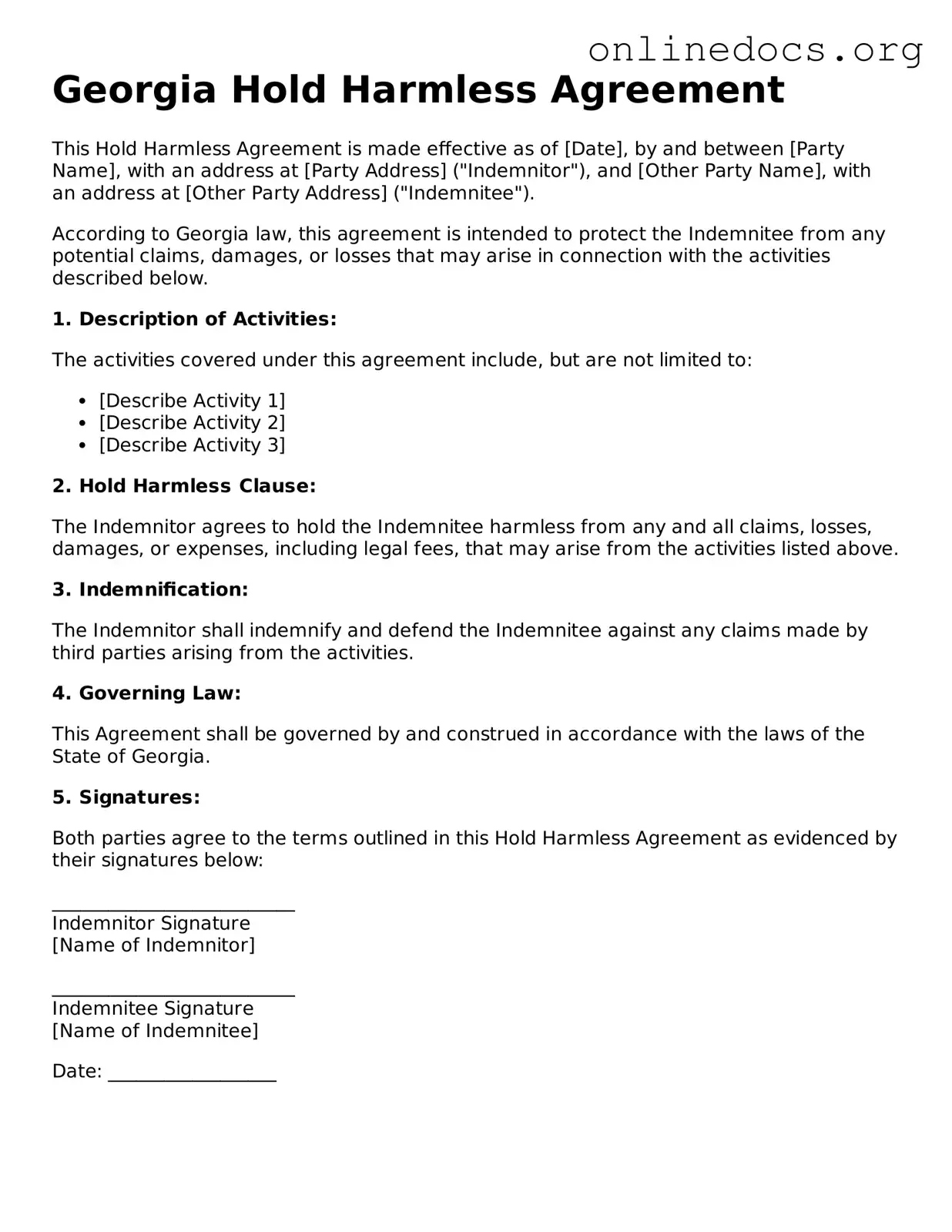The Indemnity Agreement is similar to the Georgia Hold Harmless Agreement in that both documents aim to protect one party from legal liability. An Indemnity Agreement typically involves one party agreeing to compensate another for losses or damages incurred. This means that if a third party files a claim, the indemnifying party will cover the costs associated with that claim, similar to how the Hold Harmless Agreement protects against liabilities arising from specific actions or events.
The Liability Waiver is another document that shares similarities with the Hold Harmless Agreement. A Liability Waiver is often used in activities where there is a risk of injury, such as sports or recreational events. Participants sign this waiver to acknowledge the risks involved and agree not to hold the organization responsible for any injuries. Both documents serve to limit the legal responsibility of one party, but a Liability Waiver focuses more on personal injury risks, while the Hold Harmless Agreement can encompass broader liabilities.
The Release of Liability form also parallels the Georgia Hold Harmless Agreement. This document releases one party from liability for any claims or damages that may arise from a specific activity or event. Like the Hold Harmless Agreement, the Release of Liability form is intended to protect against future legal claims. However, it often requires the signer to forfeit their right to sue, which may not be the case in all Hold Harmless Agreements.
The New York Residential Lease Agreement not only delineates essential terms for a landlord-tenant relationship but also safeguards both parties by ensuring clarity about the agreement's provisions. By understanding every detail included in the lease, such as rent obligations and property maintenance responsibilities, tenants can make informed decisions before signing. For those seeking a comprehensive guide to drafting or reviewing such agreements, resources like legalformspdf.com prove invaluable in navigating the complexities of rental contracts.
The Service Agreement can be compared to the Hold Harmless Agreement in terms of risk management. Service Agreements outline the responsibilities and expectations between parties in a service-based relationship. Often, these agreements include clauses that limit liability, similar to the Hold Harmless Agreement. While the focus of a Service Agreement is on the delivery of services, the risk mitigation aspect aligns closely with the objectives of the Hold Harmless Agreement.
The Rental Agreement is another document that bears resemblance to the Hold Harmless Agreement. Rental Agreements often include clauses that require tenants to indemnify landlords against certain liabilities. This means that if a tenant causes damage or if someone is injured on the property, the tenant may be responsible for covering those costs. Both documents aim to clarify the responsibilities of each party and protect against potential legal claims.
Finally, the Non-Disclosure Agreement (NDA) can be likened to the Hold Harmless Agreement in terms of protecting sensitive information. While an NDA primarily focuses on confidentiality, it often includes provisions that protect the disclosing party from any legal repercussions if the receiving party breaches the agreement. Both documents serve to shield one party from potential risks, although the nature of those risks differs significantly.
